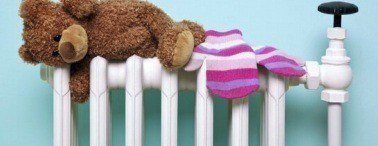
Ever since the first Oil Crisis in 1973, when the oil producing states (OPEC) began setting the price for a barrel of petroleum, people have been watching their home heating bills and looking for ways to have a more efficient home. This included “tightening†the exiting homes, and ones being built, until they were essentially leak-proof. The problem with such homes is that the occupants do not get enough fresh air because the portals for air - window sills, vents, leaks in the sills and fireplace chimneys - are closed off.
To alleviate this problem HVAC contractors introduced an innovation called the air exchanger was introduced. This system operates with a central fan system that sucks in fresh air from the outside and exhausts the used, indoor air out a different vent. In essence there is a continuous flow of air and the occupants receive their oxygen while getting rid of moisture, carbon dioxide, dust, mites and other harmful particles. The only problem with this system is that, especially in northern areas, heated air goes out the vent as well.
Heat Recovery Ventilation (HRV)
To counter the loss of leaving a home I the exhausting air a new system was invented to capture heat going outside and transfer it to the cold air coming in. The home heat recovery unit contains baffles that have thin walls. The cold air enters one side of the baffles and passes over the outgoing heated air without actually coming into contact with it and up to 85% of the outgoing energy is reused. In many cases the whole home's ventilation is tied into the heat recovery system including the kitchen and bathroom exhausts.
There are many types of HRV but they all work in the same way. During the exchange moisture in the air condenses so a pan inside the cabinet allows water to be collected and piped away to a drain. Air exchangers can be set up to be either on or off but many models are available with a humidistat for operating the system when the moisture gets too high in the homes.
Pellet Stoves
Another way of providing heat for the home without breaking the bank is the pellet stove. Pellets are around 3/4†to 1†in diameter and are made from waste wood, a by-product of the lumber industry. These are purchased in fifty-pound bags and the pellets are dumped into a hopper for storage. The heater looks like a normal wood stove with a blower that keeps the pellets burning because they would not burn consistently without a constant stream if air. An auger controlled by a thermostat feeds the stove by gradually delivering pellets to the burning chamber. This process will run automatically for up to 24 hours. However, since the blower runs on electricity the homeowner needs a battery back-up in case the power goes out.
Heat Pumps
The way heat pumps work is that they literally pull heat “from thin air†- or the earth, or water. Using a technology that is basically the reverse of a refrigerator liquid coolant is evaporated and then condensed. This is a continuous action and provides heat or, if reversed in the summer, air conditioning. The main source for a hear pump is air but in colder temperatures this system needs a back-up. This is because heat pumps lose their efficiency as the temperature goes down and, depending on the brand, will not produce heat below 20 - 25 degrees Fahrenheit. In this case many systems will have an electric element which will activate at the temperature when the heat stops in the regular system. For much of the country this might need to happen for 20 to 30 days or more which is a drain on the electric bill. This would make the unit a non-starter for these regions.
However, this process is also designed to work with a pattern of pipes in the ground or under water. Called geothermal heat pumps these units can operate anywhere where the ground is not frozen which, in most parts of the country, is below 4 feet. In addition, an artesian well with a rate of 10 gallons or minute or more will provide enough heat for winter areas. This system has to be separate from the normal well. In addition, pipes can be submerged in a large pond below the winter ice levels.
Solar Hot Water
Even with thousands of years of experience the human being still has not taken full advantage of the great energy produced by the sun. Because even in places like Vancouver that have more than the normal amount of cloudy days a solar-assisted hot water system can cut the price of heating water for showering and washing up to 60%. This means that the sunny areas can almost provide all the hot water needed for the home, and this includes the winter.
The heart of the system is a panel containing tubes mounted on the roof or any surface facing the area of the sun's arc. The tubes heat up a coolant like glycol in the tubes by using a concentrated “greenhouse effect.†A pump brings the heated coolant from the roof panel to the basement of the home or other are where the water tank is kept. There are usually two tanks. One tank contains a coil of copper tubing which transfers the heat from the glycol into water in the tank. The second tank is a normal water heater and the pre-heated water from the first tank is pumped over to the second where it sits until it is ready to be used. The electric element in the main tank will bring the water up to showering temperature when needed. This system can also be used to supplement heat for in-floor radiant heaters.
For more information on HVAC options for your home contact our Contractor Directory or simply post you project on our site at www.trustedpros.ca and get HVAC contractors calling you with free estimates.
Posted by: TrustedPros





